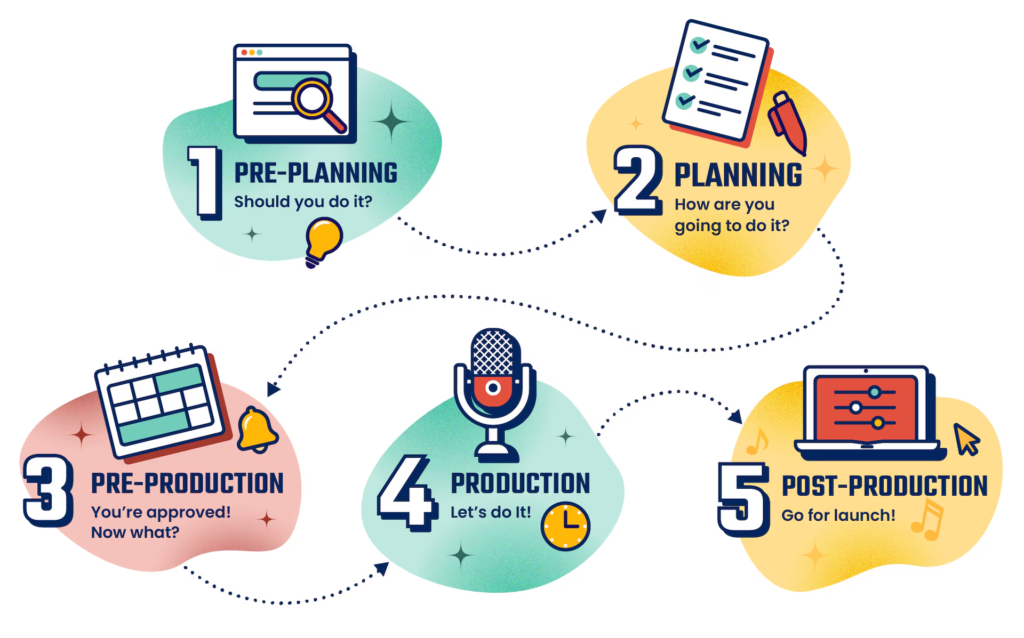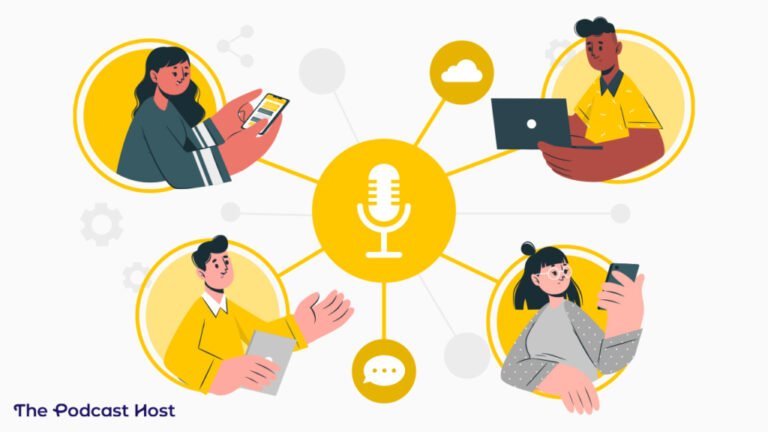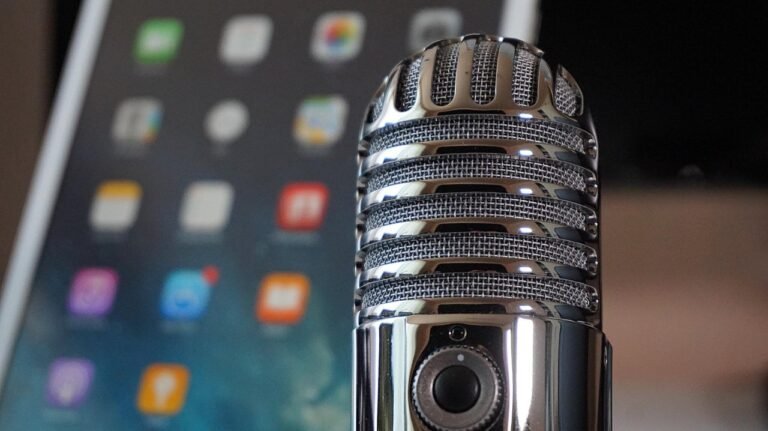How to Plan a Podcast Episode (Step-by-Step Guide)
Behind every successful podcast episode is a well-thought-out plan. Planning your episodes ensures that your content is engaging, well-structured, and valuable to your audience.
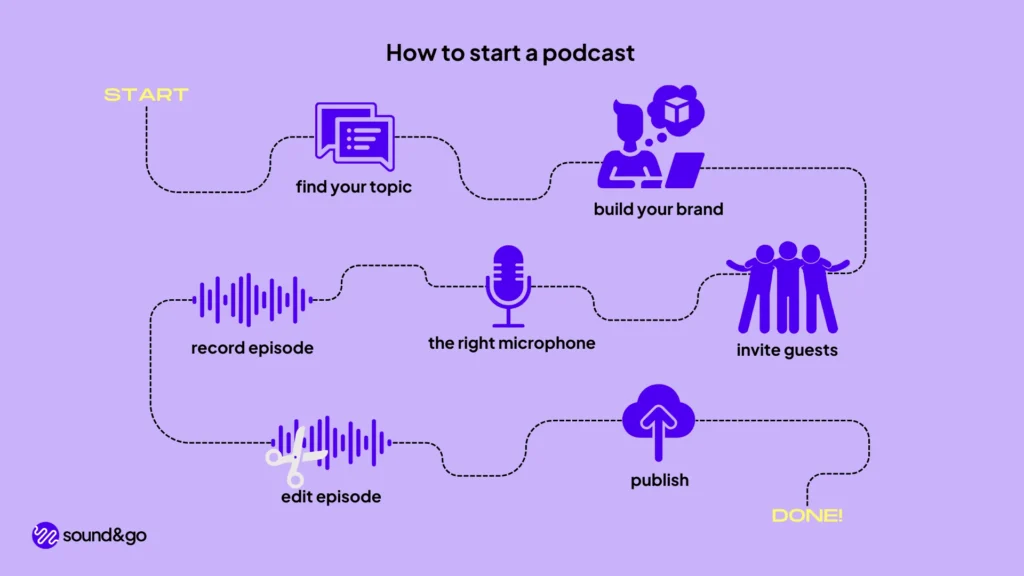
Today, we’ll walk you through how to plan a podcast episode that doesn’t just fill time, but actually delivers value. Whether you’re flying solo or interviewing a guest, a solid episode plan helps you stay focused, sound professional, and keep your listeners coming back for more.
Why Podcast Episode Planning Matters
Step 1 – Define Your Episode Goal
Before hitting record, ask yourself:
• What do I want listeners to learn, feel, or do after this episode?
• Is the goal to educate, entertain, or inspire?
Clearly defining your episode’s goal will guide the content and flow.

Step 2 – Choose a Compelling Topic
Select topics that:
• Align with your podcast theme
• Interest your target audience
• Have SEO potential (searchable keywords)
If you’re stuck, use audience feedback, trending topics, or FAQs as inspiration.
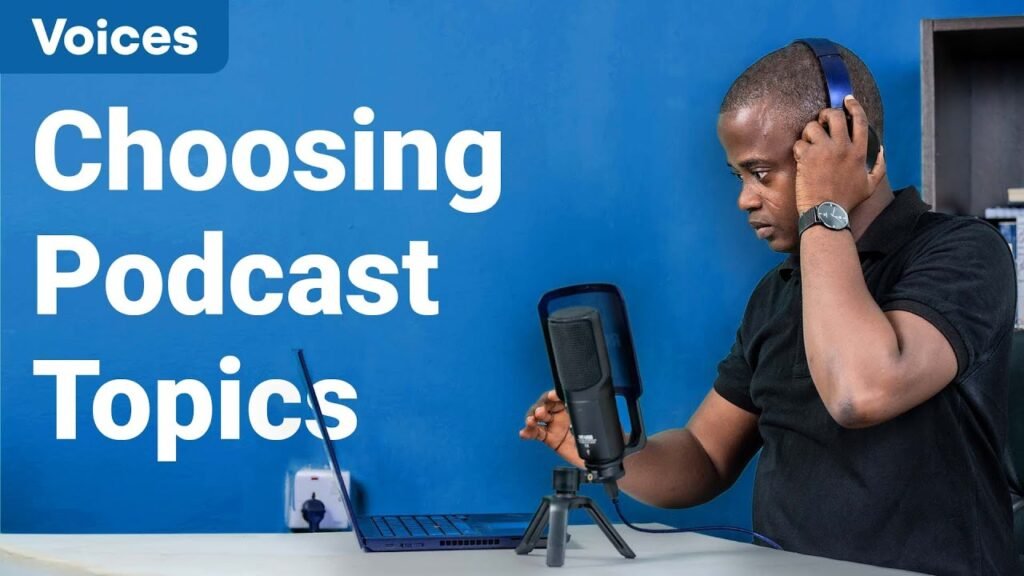
Step 3 – Research & Gather Information
Whether you’re recording solo or hosting a guest, research is key:
• Prepare key points and facts
• List questions for guests
• Find supporting resources or data
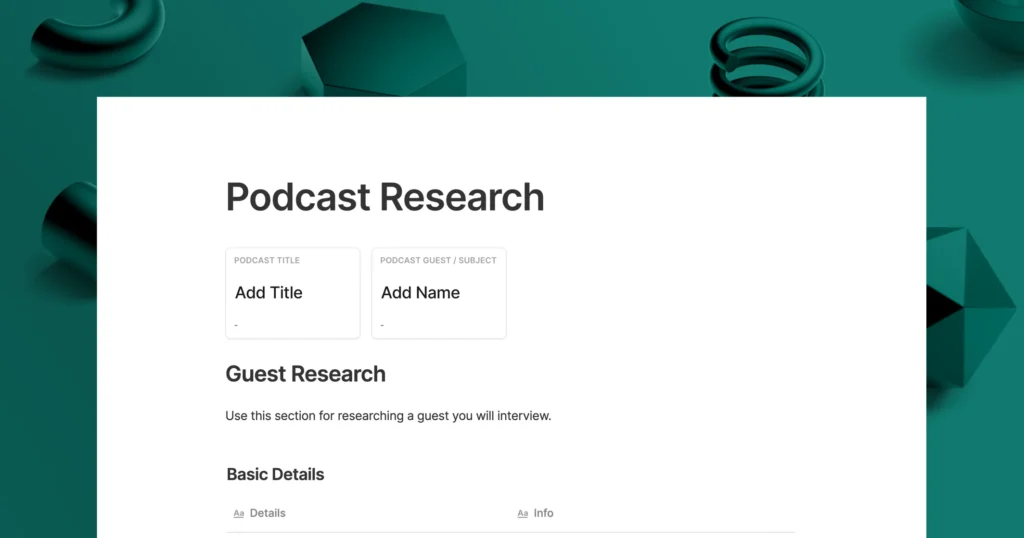
Step 4 – Outline Your Episode Structure
A clear structure helps the episode flow naturally. Common formats include:
Typical Episode Structure
• Intro: Welcome listeners and introduce the topic (1–2 minutes)
• Main Content: Discuss key points, interview guests, share stories (15–30 minutes)
• Call to Action: Encourage listeners to subscribe, review, or visit your website
• Outro: Thank listeners and preview the next episode
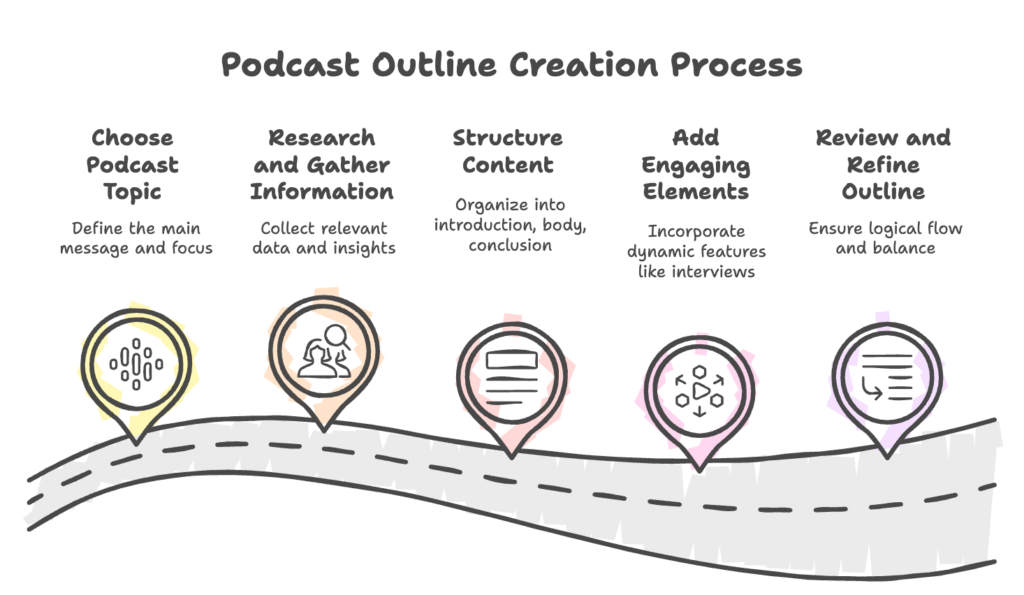
Step 5 – Prepare Questions or Talking Points
For interviews, draft open-ended questions to guide the conversation without making it sound scripted.
For solo episodes, prepare bullet points or detailed notes to keep the content focused.
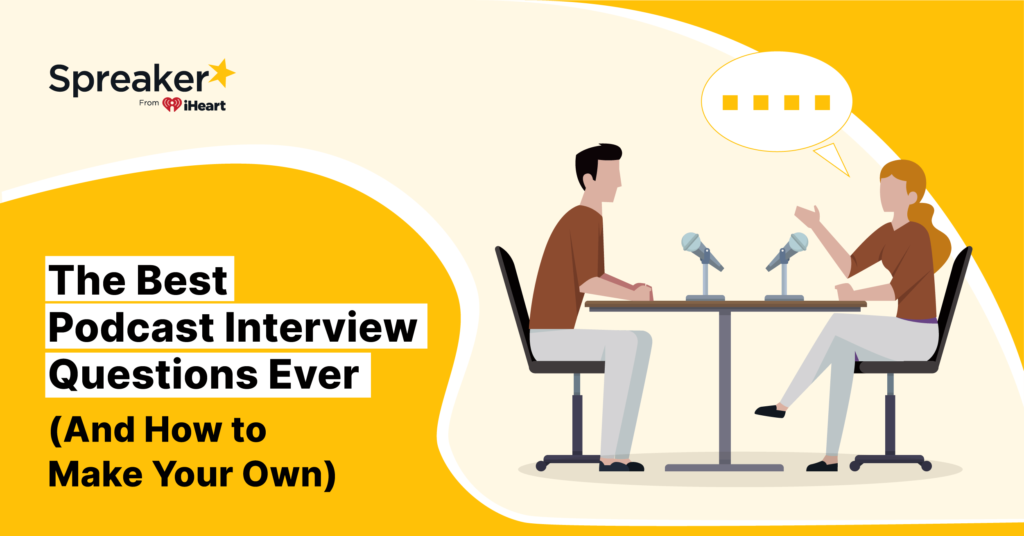
Step 6 – Time Your Episode
Decide on the episode length based on your audience’s preferences and content depth. Common lengths:
• 15–20 minutes: Quick tips or updates
• 30–45 minutes: Interviews or deep dives
• 60+ minutes: In-depth discussions or panel episodes
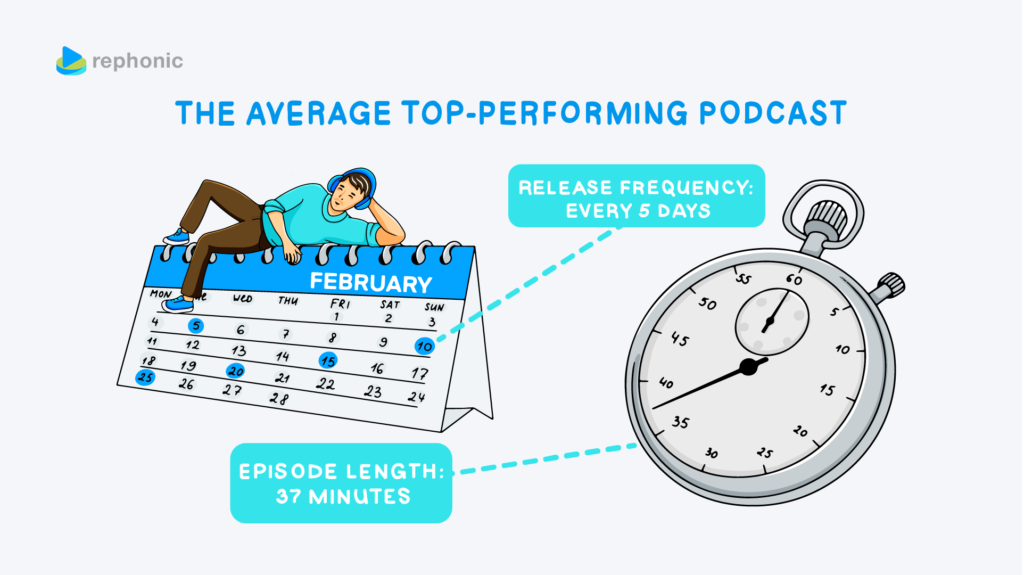
Step 7 – Add Engaging Elements
Keep listeners engaged with:
• Personal stories
• Audience questions
• Quotes and sound effects (sparingly)
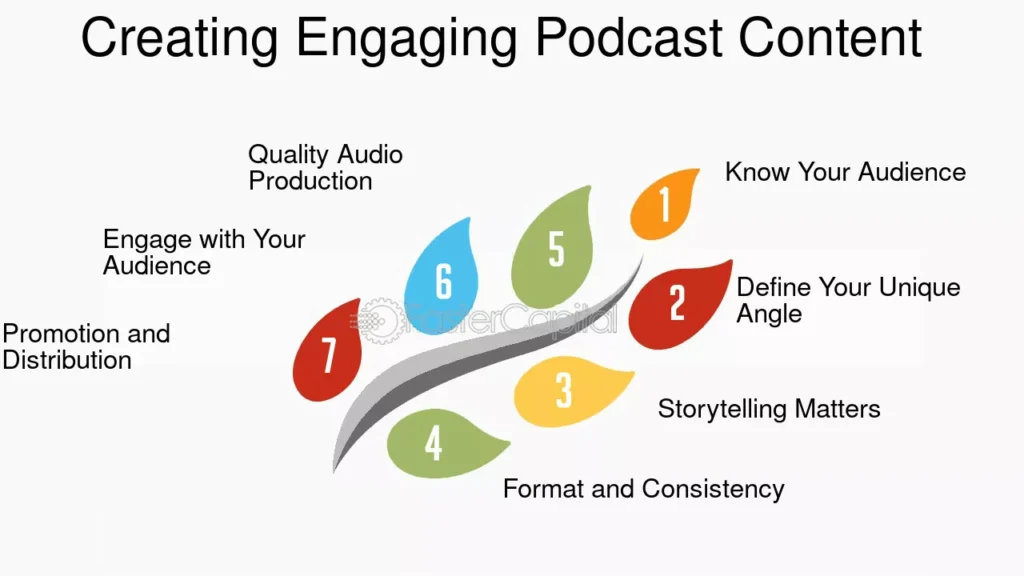
Step 8 – Prepare Your Call to Action (CTA)
End each episode with a clear CTA:
• Subscribe to the podcast
• Leave a review
• Share the episode
• Visit your website or follow on social media
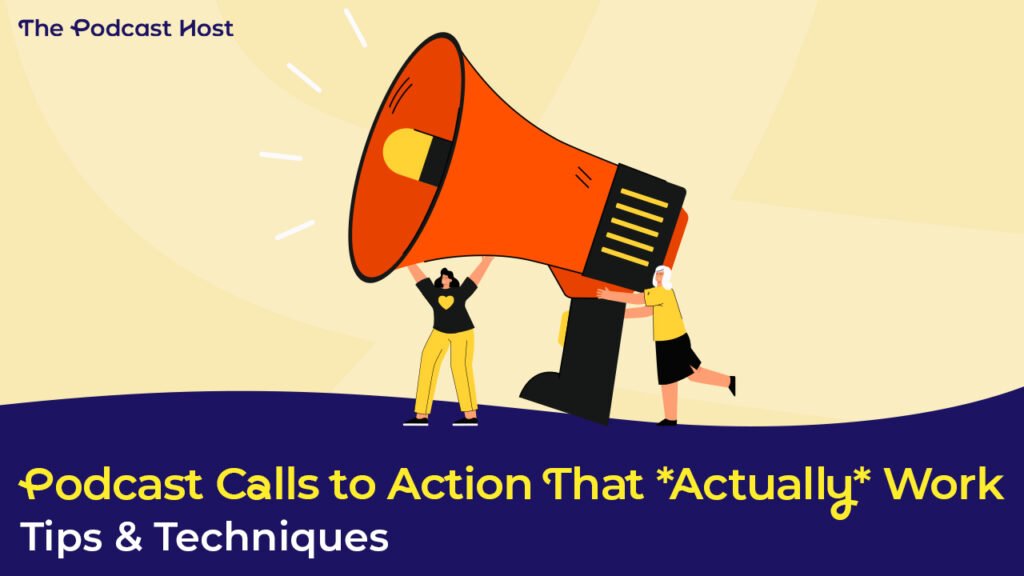
Bonus Tip – Batch Plan Your Episodes: Planning multiple episodes at once saves time and helps maintain a consistent publishing schedule.
Podcast Episode Planning Template
Episode Title: [Enter Title]
Episode Goal: [Define what you want listeners to gain]
Main Topic: [Topic of the episode]
Key Points/Outline:
• [Key Point 1]
• [Key Point 2]
• [Key Point 3]
Guest Info (if applicable):
[Guest Name & Bio]
Call to Action: [CTA]
Ready to Plan Your Next Podcast Episode?

A well-planned episode is the key to keeping your listeners engaged and coming back for more. By following this simple, structured process, you’ll save time, reduce editing headaches, and deliver high-quality content consistently.
At Social Peak Media, we help podcasters with every step of their production—from planning to publishing. Contact us today to streamline your podcast workflow.
Disclosure: Our blog contains affiliate links to products. We may receive a commission for purchases made through these links. However, this does not impact our reviews and comparisons. We try our best to keep things fair and balanced, in order to help you make the best choice for you.


